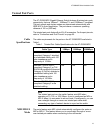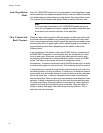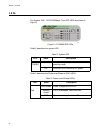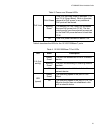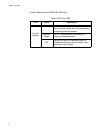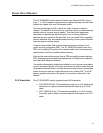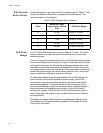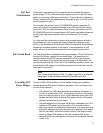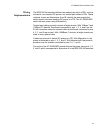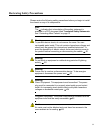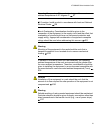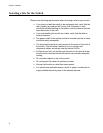
AT-GS900/8PS Switch Installation Guide
27
PoE Port
Prioritization
If the power requirements of the powered devices exceed the switch’s
power budget (75 W), the switch denies power to one or more PoE ports
based on a process called port prioritization. The port priority is based on
the port number with the highest priority assigned to port 1 and the lowest
priority assigned to port 4.
For example, this occurs if your AT-GS900/8PS switch is powered off
when you connect four powered devices to the PoE ports which require
more than 75 W of combined power. When you turn the power on to the
AT-GS900/8PS switch, the lowest priority PoE port(s) are denied power so
that the total PoE power supplied does not exceed the 75 W power
budget.
You may use this mechanism to ensure that powered devices critical to
the operations of your network are given preferential treatment by the
switch. in the distribution of PoE power Should the demands of the devices
exceed the available capacity of the switch, in the distribution of PoE
power will go to those devices connected to the highest priority ports.
PoE Guard Band The PoE Guard Band is defined as the range between 70 and 75 Watts of
the total PoE power supplied to the switch ports. This power band is
reached when the total PoE power requirements of all of the powered
devices connected to the switch fall into this range. It is indicated on the
front panel when the PoE Limit LED is ON. When this condition exists, the
switch denies PoE power to any additional powered devices that may be
connected to the switch.
Note
See “Power over Ethernet LEDs” on page 22 and 23 for a detailed
description of the functions indicated by the PoE Limit LED.
Exceeding PoE
Power Budget
If a port’s POE LED is blinking, the PoE power to that port is disabled
indicating that the PoE power budget is exceeded. This condition occurs
for one of two reasons:
The demand for PoE power from the power device connected to
the port is greater than 30 W. The maximum amount of power any
port can supply by itself is 30 W. Power demands more than 30 W
exceed the port’s ability to deliver PoE power and the PoE power
delivered by that port is shut down.
The total demand for PoE power on all ports is exceeding the 75 W
maximum PoE power limit of the switch. This condition occurs
when you connect an additional power device to a switch port and
the switch attempts to deliver more than the maximum PoE power
limit for the switch. When this situation occurs, the lowest priority
port(s) is denied PoE power so that the combined PoE power
delivered to all the power devices connected to the switch remains
under 75 W.



